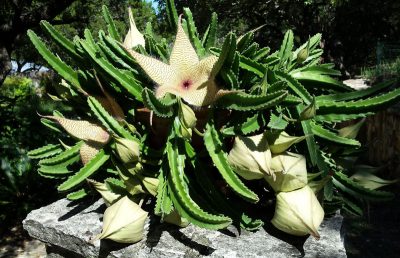Last Child in the Woods
air date: November 25, 2017
More than ever, getting our children (and us!) outside is essential. Richard Louv, author of Last Child in the Woods, The Nature Principle and Vitamin N: The Essential Guide to a Nature-Rich Life, examines nature-deficit disorder and how it impacts us. On tour, Deborah Paradez and Frank Guridy turned lawn into organic food when their daughter was born, thanks to Randy Jewart of Resolution Gardens. Daphne explains why ‘Orient’ pears can be rock hard and how to soften. See why viewers love their Stapalia gigantea, the carrion plant, which fends off deer with beautiful blooms that catch flies! Trisha crafts gorgeous cut flower designs with garden and store bought flowers.

 Deborah Paredez
Deborah Paredez Randy Jewart
Randy Jewart